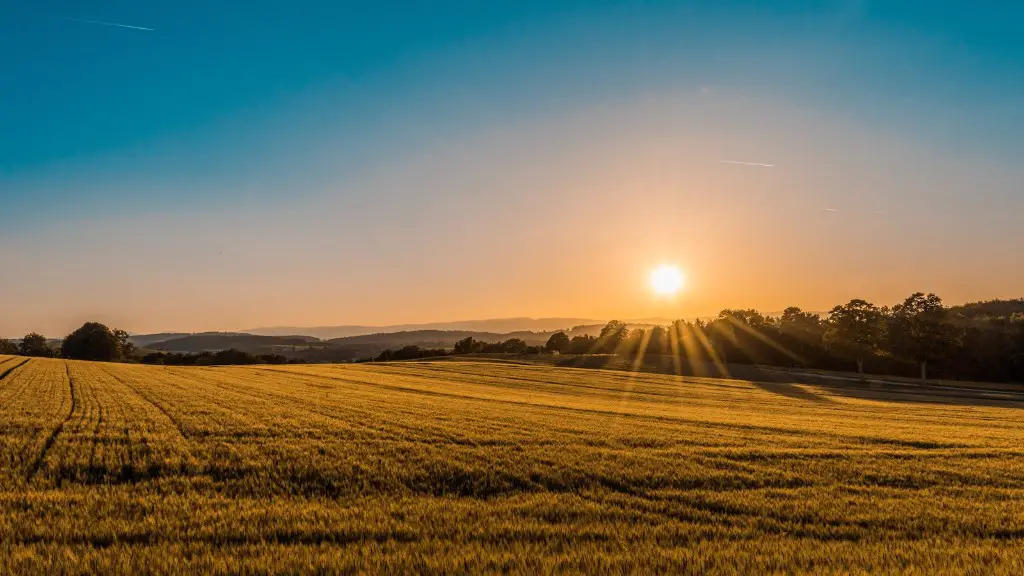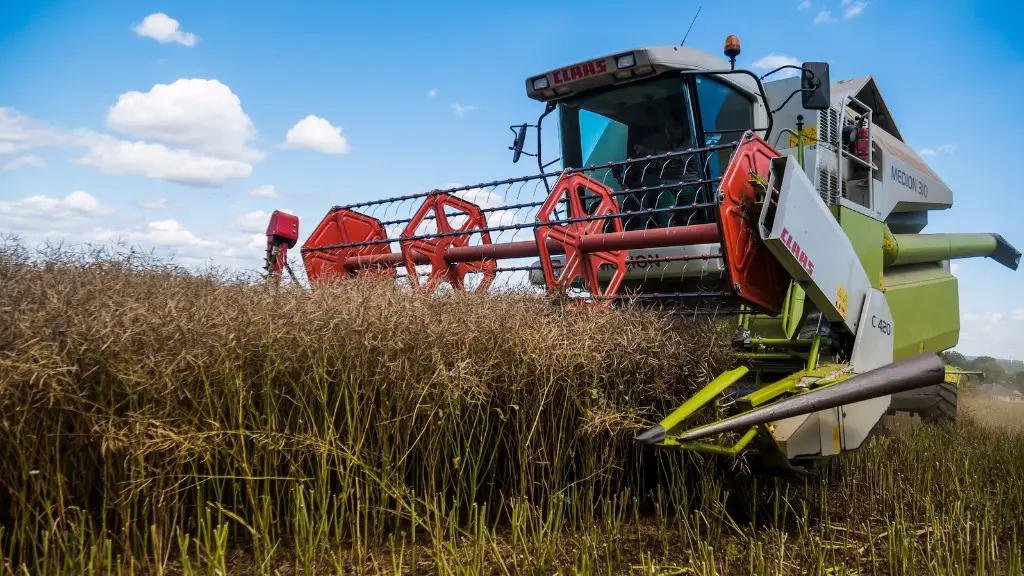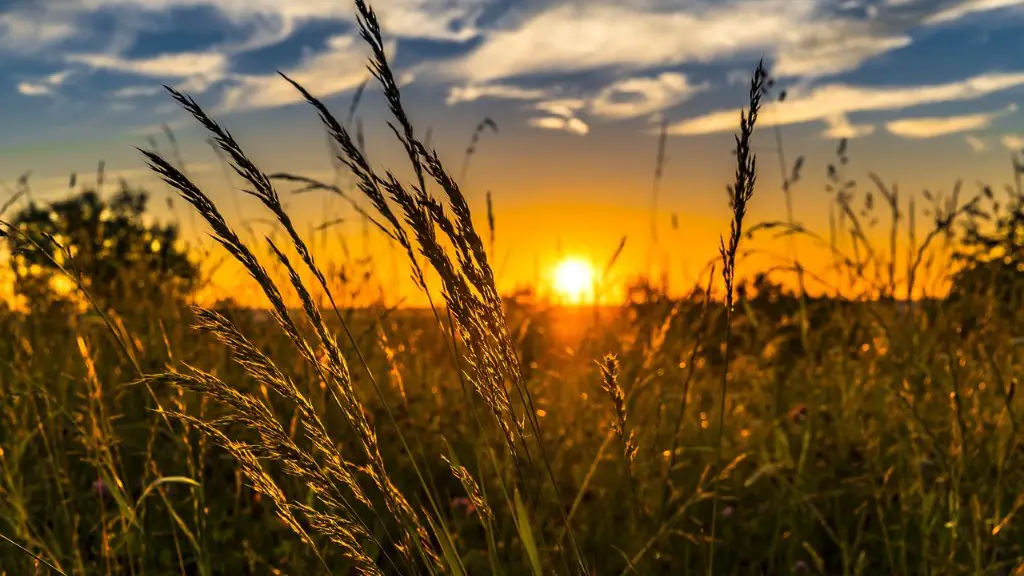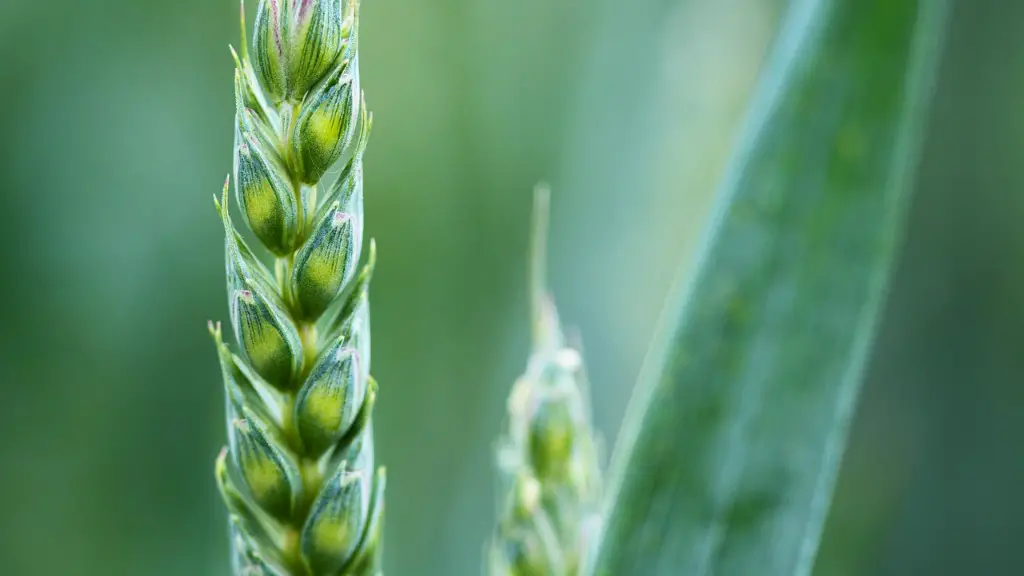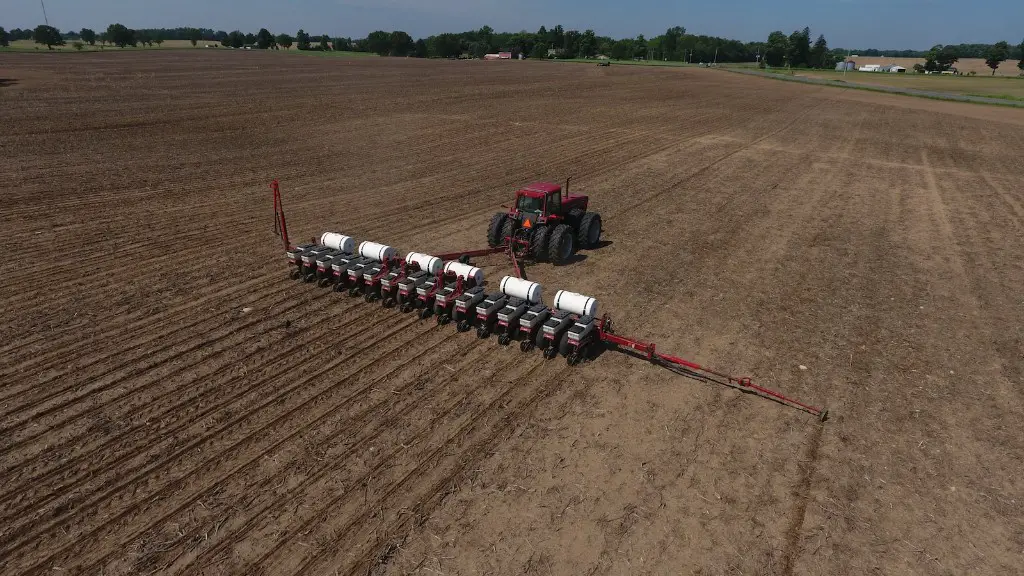Agriculture has been practiced for centuries and has had a profound impact on human society and the environment. Agriculture began as a way to sustain human populations and has since become the primary source of food for most people on earth. The way we grow and rear our crops and livestock has changed dramatically over time, and the environmental impacts of agriculture are becoming more and more evident. The United Nations estimates that agriculture is responsible for 24% of global greenhouse gas emissions, and the World Bank has called for a “greener” and more sustainable form of agriculture to help mitigate the effects of climate change. Agriculture also plays a significant role in water use and pollution, land degradation, and deforestation. As the world’s population continues to grow, the demand for food will only increase, putting even more pressure on our already strained resources. It is imperative that we find ways to produce food more efficiently and sustainably, before it’s too late.
The main impact of agriculture on the environment is the conversion of natural habitats to agricultural habitats. This conversion has a variety of consequences, including the loss of animal and plant species, the alteration of hydrological systems and soil erosion. Agriculture also has a range of other impacts on the environment, including the pollution of water resources with agricultural chemicals and the release of greenhouse gases from agricultural production.
What are the positive impacts of agriculture on the environment?
Agriculture can have a positive impact on the environment in a number of ways. For example, farming practices can help to reduce air pollution, and can provide a resource-rich habitat for certain wild species. In addition, agricultural land can also serve as a buffer against development and encroachment, helping to preserve natural areas and open space.
Agriculture is vital to society in many ways. It helps support livelihoods through food production, provides habitat for wildlife, and creates jobs. It also supplies raw materials for food and other products, and contributes to strong economies through trade.
What are three environmental impacts agriculture
Agriculture plays a significant role in many environmental issues that are causing environmental degradation. These include climate change, deforestation, biodiversity loss, dead zones, genetic engineering, irrigation problems, pollutants, soil degradation, and waste. Agriculture often contributes to these problems through the use of harmful chemicals and practices, such as clear-cutting forests, overgrazing, and monoculture.
There are many ways to address the problems caused by agriculture, such as using more sustainable practices, developing new technologies, and changing government policies. However, it is important to remember that agriculture is vital to our society and economy, and so any solutions must be carefully balanced in order to avoid causing more harm than good.
1) Agriculture is the main source of raw materials for many industries.
2) Agriculture is important to international trade.
3) Agriculture plays a big role in a nation’s revenue.
4) Agriculture provides employment for many people.
5) Agriculture is crucial to a country’s development.
6) Agriculture can help heal the environment.
7) Agriculture goes hand-in-hand with war.
8) Agriculture is a way of life for many people.
What are 5 important of agriculture?
The mainstay of the economy of any country in the world is its agriculture. It is the agriculture which provides food to the people and raw materials to the industries. The industrialization and economic development of a country is dependent on its agriculture.
The developed countries of the world have achieved progress and prosperity due to their well-developed agriculture. The agriculture sector in these countries is highly mechanized and scientific methods are used for increasing production. They have developed irrigation facilities and have made use of fertilizers and pesticides to increase crop production. They have also adopted scientific methods of animal husbandry and have improved the breeds of livestock.
The developing countries of the world are still dependent on traditional methods of agriculture. The yield is low due to the use of primitive tools and lack of irrigation facilities. The use of fertilizers and pesticides is also limited. As a result, the production is insufficient to meet the needs of the growing population.
It is, therefore, essential for the developing countries to modernize their agriculture and make use of scientific and technological advances to increase production. They should develop irrigation facilities, make use of fertilizers and pesticides, and improve the breeds of livestock. Only then will they be able to achieve economic development and improve the standard of living of
The government has implemented financial assistance programs that enable farmers to reduce their GHG emissions from agriculture. These programs help farmers by providing funding for things like soil manure management and enteric fermentation. This reduces the amount of GHGs emitted by agriculture, which is good for the environment.
What impacts does agriculture have on climate change?
Changes in agricultural production could result in reduced greenhouse gas emissions and removal of carbon dioxide from the atmosphere through carbon sequestration. Farm operators can change production practices or land use to increase the carbon stored in soil or vegetation. There are a number of ways that farmers can sequestration carbon:
-Reduce tillage: by reducing the amount of tillage, farmers can decrease the amount of carbon that is released into the atmosphere.
-Rotate crops: by rotating crops, farmers can help increase the amount of carbon that is stored in the soil.
-Plant cover crops: by planting cover crops, farmers can help increase the amount of carbon that is stored in the soil.
-Manage manure: by managing manure properly, farmers can help reduce the amount of methane that is released into the atmosphere.
Air pollution is the presence of harmful substances in the air, which can cause health problems and damage the environment.
Water pollution is the contamination of water bodies, such as lakes, rivers, oceans, and groundwater, with pollutants that can cause health problems, reduce the quality of life, or damage the environment.
Soil pollution is the contamination of soil with harmful substances that can cause health problems, reduce the quality of life, or damage the environment.
Noise pollution is the excessive noise that can cause health problems, reduce the quality of life, or damage the environment.
Light pollution is the excessive or unwanted light that can cause health problems, reduce the quality of life, or damage the environment.
What are the main environmental impacts
There is no doubt that humans have had a significant impact on the physical environment. Overpopulation, pollution, burning fossil fuels, and deforestation have all contributed to climate change, soil erosion, poor air quality, and undrinkable water. These changes have had a negative impact on the environment and the creatures that live in it. We must work to reverse these trends in order to protect our planet and its inhabitants.
Agriculture has been a cornerstone of human civilization for centuries. It has allowed humans to specialize in different areas and become experts in their field. Domestication of plants such as wheat, corn, and rice has lead to the development of complex civilizations. However, agriculture has not been without its problems. Conflicts over access to food supplies are common, and bad weather can often damage crops. Despite these problems, agriculture remains a vital part of human society.
Why agriculture is very important?
Agriculture is responsible for providing most of the world’s food and fabrics. Common agricultural products include cotton, wool, and leather. Additionally, agriculture provides wood for construction and paper products. The types of agriculture and the products it produces can vary significantly from one region of the world to another.
There are both advantages and disadvantages to sustainable agriculture. The main advantages are that it can help to reduce costs, control air and water pollution and soil erosion, and promote social equality. However, it can also take longer for farmers to carry out their farm operations, which can be a downside.
What are the most importance of agriculture
Agriculture can play a major role in reducing poverty, raising incomes and improving food security for a large majority of the world’s poor. The World Bank Group is a leading provider of finance for agriculture, and we are committed to supporting developing countries in their efforts to reduce poverty and improve food security.
The very poorest people in society benefit the most from agricultural growth. This is because agricultural growth increases the demand for labor, which in turn increases the probability of getting a job. Additionally, agricultural growth may also lead to an increase in salary levels, thereby increasing the amount of money that can be earned from working.
Why is agriculture important 10?
Agriculture is the backbone of the economy in many developing countries, including India. It is therefore essential that agriculture plays a role in pushing up the rate of capital formation. Capital formation is vital for economic development, and if agriculture fails to contribute, the whole process will suffer. India must therefore ensure that agriculture is a key driver of capital formation.
It is estimated that agriculture, including livestock, accounts for 70% of all water used by humans. With the world’s population projected to increase to 9.7 billion by 2050, demand for food will increase by 50%. This will put additional pressure on the already over-exploited water resources used for agriculture.
In terms of greenhouse gas (GHG) emissions, agriculture is responsible for around 11% of total emissions, with the majority of these emissions coming from livestock. These emissions come from enteric fermentation (digestion) in cattle and other ruminants, and from manure management. With the demand for meat expected to increase with population growth, GHG emissions from agriculture are likely to increase unless there are changes in production practices.
The expansion of agricultural land is a major cause of deforestation, which leads to a loss of biodiversity and an increase in GHG emissions. Deforestation also reduces the land’s ability to store carbon, which contributes to climate change.
Final Words
The impacts of agriculture on the environment are both positive and negative.
Positive impacts include the provision of food, fibre and fuel, while negative impacts can include land degradation, water pollution and biodiversity loss.
In terms of food production, agriculture plays a vital role in ensuring global food security. It is estimated that around 70% of the food we eat comes from crops, while the other 30% comes from livestock. Agriculture is also a major source of employment, with around 1.3 billion people worldwide working in the sector.
In terms of its negative impacts, agriculture is a leading cause of land degradation. This is due to activities such as deforestation, overgrazing and soil erosion. These activities can lead to a loss of productivity and, in extreme cases, desertification.
Water pollution is another significant negative impact of agriculture. Pesticides and fertilizers can pollute rivers and groundwater, while livestock farming can pollute water through the discharge of manure and other waste products.
Finally, agriculture can also have a negative impact on biodiversity. This is due to activities such as deforestation and the conversion of natural habitats into farmland. This can lead to the loss of habitat for wildlife, and the loss of plant and animal species.
Overall, the impacts of agriculture on the environment are both positive and negative. On the positive side, agriculture provides a source of food and other products for humans and animals. On the negative side, agriculture can lead to soil erosion, water pollution, and habitat destruction.
